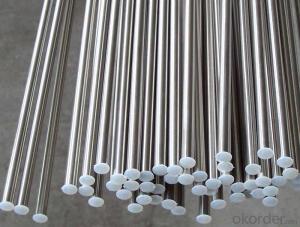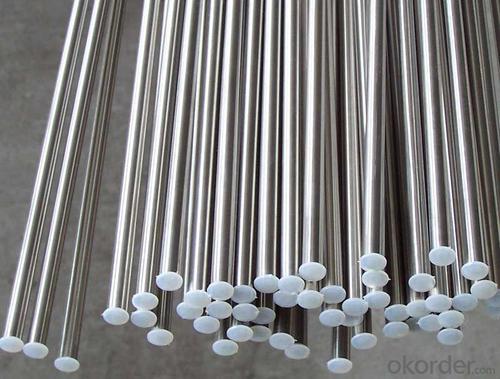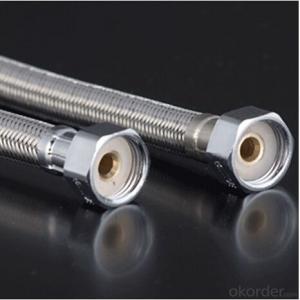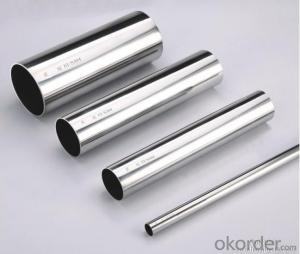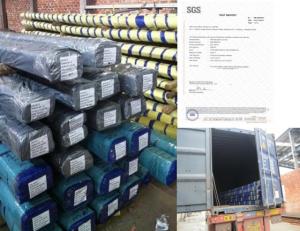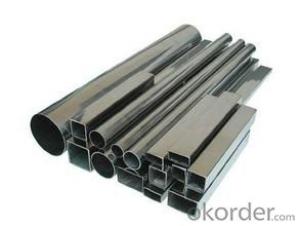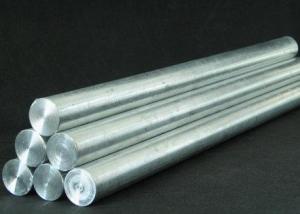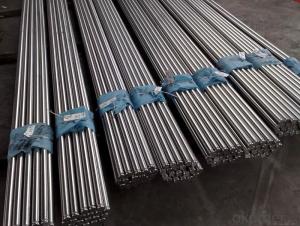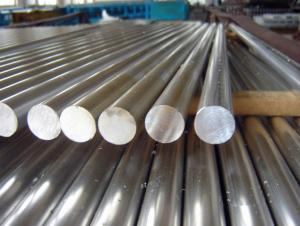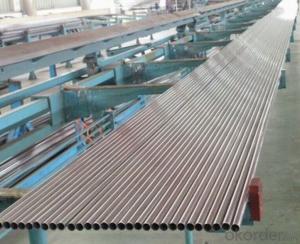okorder gold supplier en1.4301 stainless steel bar
- Loading Port:
- Tianjin
- Payment Terms:
- TT OR LC
- Min Order Qty:
- 100 kg
- Supply Capability:
- 1000 kg/month
OKorder Service Pledge
Quality Product, Order Online Tracking, Timely Delivery
OKorder Financial Service
Credit Rating, Credit Services, Credit Purchasing
You Might Also Like
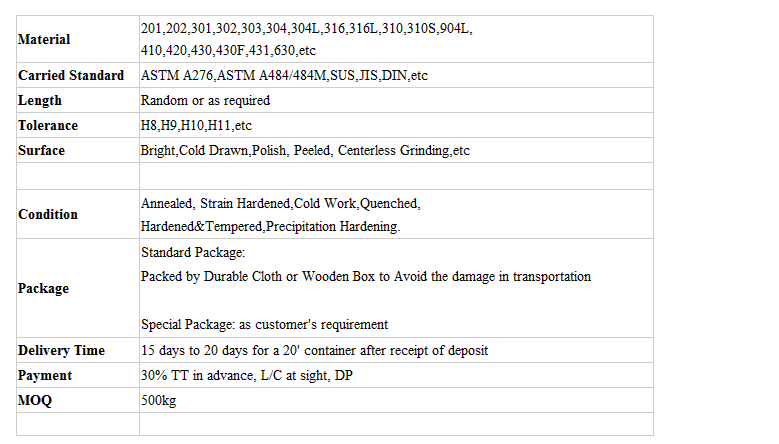
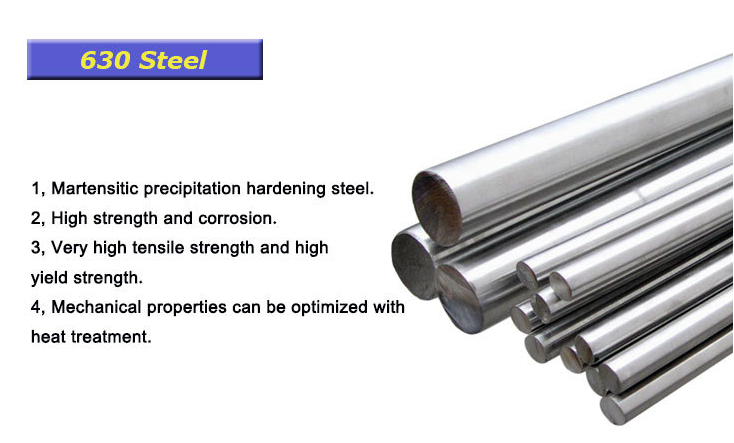
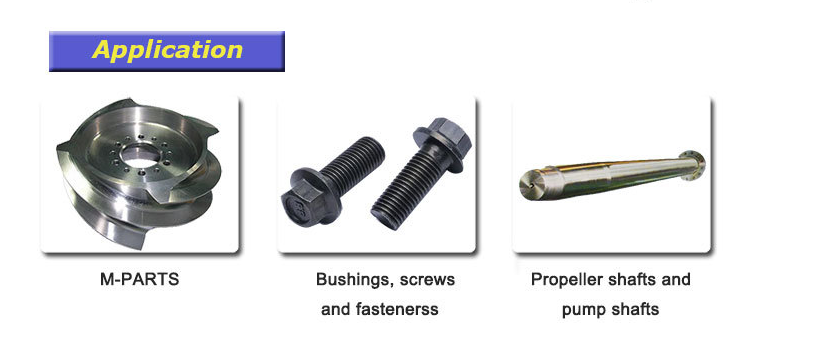
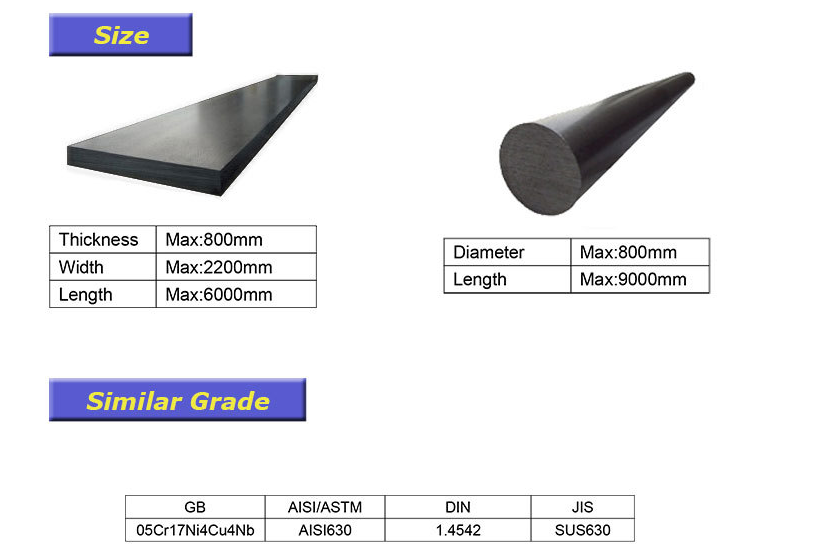
- Q: Can stainless steel pipes be used for drinking water supply?
- Certainly! For drinking water supply, stainless steel pipes are a viable option. Being a remarkably sturdy and corrosion-resistant substance, stainless steel proves to be an appropriate selection for securely and hygienically conveying drinking water. Unlike alternative materials, stainless steel pipes refrain from releasing detrimental chemicals or impurities into the water, thereby preserving its quality and purity. Moreover, stainless steel pipes possess resistance against bacterial proliferation, thereby enhancing the safety of the drinking water.
- Q: What is the difference between OD and ID for stainless steel pipes?
- The terms OD and ID refer to the outer diameter and inner diameter of stainless steel pipes, respectively. The main difference between OD and ID lies in their measurement and purpose. The outer diameter (OD) is the measurement of the entire cross-sectional dimension of the pipe, including the thickness of the pipe wall. It is typically measured from the outermost points of the pipe. The OD is crucial in determining the size and compatibility of fittings, connections, and other components that will be used in conjunction with the pipe. The OD is commonly used for pipe identification, ordering, and specifying the size of the pipe. On the other hand, the inner diameter (ID) is the measurement of the empty space within the pipe, specifically the width of the pipe's inner cavity. It is typically measured from the innermost points of the pipe. The ID is essential for fluid flow calculations, as it determines the available area for fluid passage within the pipe. The ID is often used in hydraulic systems, as well as for calculating pressure drop and flow rates. In summary, the difference between OD and ID for stainless steel pipes lies in their measurement and purpose. OD refers to the outer diameter and is used for pipe identification and sizing, while ID refers to the inner diameter and is crucial for fluid flow calculations and hydraulic system design.
- Q: Can stainless steel pipes be used for steam applications?
- Indeed, stainless steel pipes have the capability to serve steam applications. Stainless steel possesses remarkable characteristics such as exceptional resistance to high temperatures and corrosion, rendering it appropriate for steam systems. It can endure the immense pressure and temperatures necessitated by steam applications without distorting or corroding. Moreover, stainless steel pipes exhibit durability and possess a lengthy lifespan, establishing them as a dependable option for steam applications. Furthermore, the ease of welding stainless steel pipes guarantees a secure and leakage-free steam system.
- Q: Why pickling before cleaning stainless steel pipe oil?
- On the premise of oxide, a good foundation for the formation of passive film is made, which makes the passivation film more compact and improves the passivation effect!
- Q: Can stainless steel pipes be used for breweries?
- Yes, stainless steel pipes are commonly used in breweries. Stainless steel is the preferred material for brewing equipment and piping systems due to its excellent corrosion resistance, durability, and hygienic properties. Stainless steel pipes can withstand the harsh and acidic conditions present in breweries, such as high temperatures, alkaline and acidic cleaning agents, and exposure to various chemicals. Additionally, stainless steel pipes are easy to clean and maintain, ensuring that the beer produced remains uncontaminated and of high quality. Overall, the use of stainless steel pipes in breweries helps to ensure a safe and efficient brewing process.
- Q: Can stainless steel pipes be used for pharmaceutical storage tanks?
- Yes, stainless steel pipes can be used for pharmaceutical storage tanks. Stainless steel is a preferred material in the pharmaceutical industry due to its high corrosion resistance, durability, and ability to maintain cleanliness. It is non-reactive, which helps prevent contamination of the pharmaceutical products stored in the tanks. Stainless steel pipes also offer a smooth and easy-to-clean surface, making it suitable for maintaining the required hygiene standards in pharmaceutical storage. Additionally, stainless steel is resistant to extreme temperatures and can withstand the rigorous cleaning procedures commonly used in pharmaceutical facilities. Thus, stainless steel pipes are commonly used in the construction of pharmaceutical storage tanks to ensure the safety and integrity of the stored pharmaceutical products.
- Q: Are stainless steel pipes suitable for solar power systems?
- Yes, stainless steel pipes are suitable for solar power systems. Stainless steel is highly resistant to corrosion, making it an excellent choice for solar power systems that are exposed to outdoor elements. Additionally, stainless steel pipes have high thermal conductivity, which helps in efficiently transferring heat in solar water heating systems.
- Q: Are stainless steel pipes resistant to high temperatures?
- Yes, stainless steel pipes are highly resistant to high temperatures.
- Q: Can stainless steel pipes be insulated with mineral wool?
- Certainly, mineral wool is a viable option for insulating stainless steel pipes. Widely utilized in multiple sectors like plumbing and construction, mineral wool serves as a reliable and efficient insulation material. It exhibits remarkable properties such as withstanding elevated temperatures, providing exceptional thermal and acoustic insulation. Moreover, mineral wool possesses non-combustible characteristics and moisture resistance, rendering it suitable for insulating stainless steel pipes conveying either hot or cold fluids. By employing this insulation, one can combat heat loss, decrease energy consumption, and safeguard against condensation and pipe sweating.
- Q: Can stainless steel pipes be used for hydroelectric power plants?
- Yes, stainless steel pipes can be used for hydroelectric power plants. Stainless steel is a popular choice for various industrial applications due to its excellent corrosion resistance properties. In a hydroelectric power plant, water is used to generate electricity by passing through turbines. This water can often be corrosive due to its composition and flow rate. Stainless steel pipes are highly resistant to corrosion, making them an ideal choice for conveying the water in hydroelectric power plants. Additionally, stainless steel pipes offer other benefits such as high strength, durability, and the ability to withstand high pressures and temperatures. These properties are crucial for the efficient and reliable operation of the power plant. Stainless steel pipes also maintain their structural integrity over time, reducing the need for frequent maintenance and replacement. Moreover, stainless steel pipes can handle the internal and external pressures created during the power generation process. They can withstand the high-speed flow of water and resist erosion caused by sediment and debris in the water supply. This ensures the longevity and efficiency of the hydroelectric power plant. In summary, stainless steel pipes are an excellent choice for hydroelectric power plants due to their corrosion resistance, strength, durability, and ability to withstand high pressures and temperatures.
Send your message to us
okorder gold supplier en1.4301 stainless steel bar
- Loading Port:
- Tianjin
- Payment Terms:
- TT OR LC
- Min Order Qty:
- 100 kg
- Supply Capability:
- 1000 kg/month
OKorder Service Pledge
Quality Product, Order Online Tracking, Timely Delivery
OKorder Financial Service
Credit Rating, Credit Services, Credit Purchasing
Similar products
Hot products
Hot Searches
Related keywords
